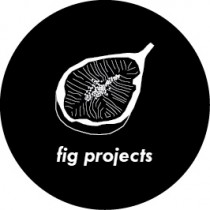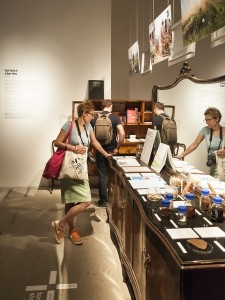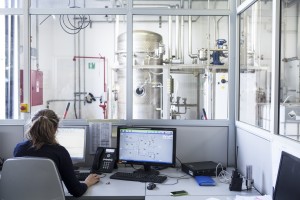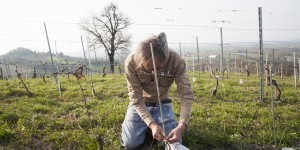Research project presented at the 14th International Architecture Exhibition – Fundamentals, Biennale di Venezia in the Monditalia section .
Curated by Brendan Cormier and Fabrizio Gallanti with Stefano Tropea, Michael Brenner, Francesca Sartori, Maria Azzurra Rossi.
Photography by Filippo Romano and Daniele Iodice
“Italy is only a geographical expression.”
Clemens von Metternich, 1847.
Summary:
A generic section through the Italian countryside revealing multiple territories determined by economics, politics, and individual actions: the area around Tortona in Piedmont, as emblematic of a typical rural condition.
Conceptual Framework:
A schematic reading of the Italian countryside can be summarized as a succession of gradients, where different man-made ecosystems are determined by the incline of the terrain, connected by lines and networks of circulation and exchange. The connection between the lowland, the hills and the mountains is a morphological feature, which is recurrent throughout the country. Each incline corresponds to different geological and natural conditions, which have consequently determined particular historical transformations that are still dynamically operating today. The presentation for the Venice Biennale selects a case-study area, which could be perceived as an example of a more general condition, as features identified there recur throughout the whole country.
The work is based on three assumptions.
1. All contemporary phenomena occurring in the countryside are determined by economic reasons, which are then sustained by administrative and political actions.
2. Rather than a centralized approach to planning, the transformation of the countryside is the result of an atomization of individual actors, who operate in a state of self-regulated anarchy.
3. The countryside is an accelerated field for change, often determined by factors, which are external to its location.
Site: Tortona as Typical Rural Transect
The selected area is focused around the town of Tortona, in the south-eastern part of Piedmont region. The presentation underlines conditions within that area that confirm the aforementioned assumptions, and describe them through quantitative data, forensic evidence in the form of collected objects, visualizations (photographs), and oral records. The hypothesis is to reveal the complex web of public and private financial support, policy frameworks, market-driven decision-making processes that operate behind the scenes, but whose effects are real and tangible in the territory. The narrative will move in a section, from West to East, intersecting different geo-morphological conditions.
Alison and Peter Smitshosn, Sketch for the “scales of association” from Patrick Geddes’s Valley section from the “Draft Framework 3” guidelines for CIAM 10, 1954.
The Plain
In the plain west of the Scrivia river, failed industrialization has given way to the rise of logistics operations in Rivalta Scrivia, the oldest European dry port, now owned by Belgian company Koen Natie. Spurred by national and European policy, the area has also become a node for research on biofuel , experimental crops, and hi-tech farming, most clearly manifested by the Mossi & Ghisolfi transnational company and the PST Science Park, where the advanced Biochemtex lab is located.
Filippo Romano, Biochemtex, Rivalta Scrivia 2014
The Hills
The Timorasso grape was brought back from near extinction and is now being planted widely around the town of Monleale. Reviving the dead wine is a marketing strategy that is hoped to give the area an edge in the competitive viticulture industry. The rebirth of the Timorasso, which has attracted attention from the international markets, is largely due to the visionary effort of maverick wine-maker Walter Massa.
Filippo Romano, Walter Massa, Monleale 2014.
The Mountains
Abandoned by peasants long ago because of low-agricultural productivity, the mountain landscape is seeing new forces move in. The empty villages are gradually reconquered by tourists from the north seeking second homes, and forest ecologies have grown in place of the stepped farm fields. Foraging, hunting, and truffle and mushroom picking have emerged as new tourist economies. The Montebore cheese, an almost forgotten product from the valleys has been at the core of the activities of Vallenostra, a young cooperative, which is actively trying to use agriculture as a means to stop the decline of the area.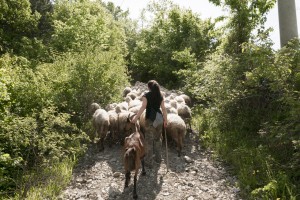
Daniele Iodice, Cooperativa Vallenostra, Mongiardino Ligure, 2014.
Download the Biennale booklet here.
Read it at ISSUU, here.
14th International Architecture Exhibition – Fundamentals, La Biennale di Venezia.
7th June – 23rd November 2014
Installation views by Daniele Iodice.
[portfolio_slideshow id=515]

